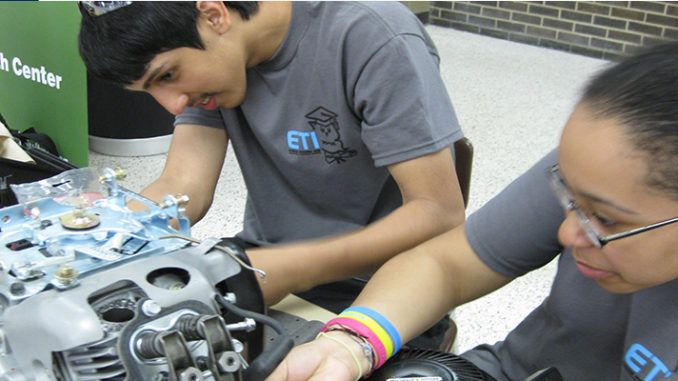
by Tyler Reny
According to a New York Times article published in June, the prestigious University of California system could experience another round of painful and draconian budget cuts if Gov. Jerry Brown’s proposed tax increase isn’t approved by California voters in November. While budgetary cuts to public higher education are always worrisome, these couldn’t come at a worse time–public, accessible, and affordable higher education is more important today than it has ever been.
The United States is in the midst of great demographic and economic shifts that will shape the 21st century and present lawmakers with both opportunities and challenges.
The first is purely demographic: The largely white baby-boomer population is aging and shrinking while the Latino and Asian populations are young and growing. The second is the bumpy transition from a manufacturing-based economy into one buoyed by knowledge-based jobs. The third is the educational and socioeconomic gaps between white and many minority populations.
Nowhere will these converging factors play out more clearly than in the already majority-minority state of California–in many ways a microcosm of the diverse future and subsequent educational and economic challenges that the U.S. is already facing.
The baby boomers are starting to retire. Although their jobs will be up for grabs, which could be great for the economy, they also expect to retire comfortably. Together, the baby boomers number about 77 million people, nearly one-fourth of the total U.S. population, and their slow exodus from the labor force is expected to expand economic opportunities for many younger workers.
At the same time, it presents the worrisome economic challenge of funding unsustainable entitlement programs and public-pension funds. The workforce of tomorrow will have to be well educated and well paid.
These labor-market openings seem like great news for Generations X and Y and, fortunately, the United States has the manpower to fill the gap.
Unlike some Asian countries and much of Western Europe, both plagued by aging, shrinking populations and low immigration, the U.S. has a large and growing young population driven largely by population growth in Asian-American and Latino communities. If the necessary investments are made to provide the next generation with the same educational opportunities that many baby boomers enjoyed, the U.S. could be well positioned to transition into the 21st century.
A successful transition to a prosperous knowledge economy, however, hinges on affordable and accessible education. The U.S. economy has radically transformed several times over the past three centuries, each requiring different resources to flourish.
The agricultural economy of the 18th and 19th centuries required large amounts of land to function and grow. The industrial economy that propelled the U.S. to unparalleled wealth and prominence in the 20th century required a large, able, and willing labor force to manufacture goods. In the 21st century, knowledge will play a predominant role in the creation of wealth and as a driver of economic activity.
Unfortunately, the population poised to take advantage of the openings in the economy, suffer persistent socioeconomic and educational disparities, leaving it ill-prepared for success.
In 2009, a Pew Social Trends report showed that the median net worth of white households was 20 times greater than black households and 18 times greater than Latino households.
Educational gaps are similar. California public school test scores collected between 2003 and 2009 show that, while overall scores rose during that time period, the rate of improvement between the Latino and white populations was so minuscule that it would take 105 years to close the gap (189 years for the black-white gap).
The tests also showed that only 37 percent of Latino and African-American students were proficient in English, a full 31 and 36 points behind their white and Asian peers, respectively.
While college enrollment is up, according to a Pew Hispanic study, Latino and African-American completion is not nearly on par with their white and Asian peers. In 2010, only 13 percent of 25- to 29-year-old Hispanics had a bachelor’s degree (compared with 19 percent of African-Americans, 39 percent of whites, and 53 percent of Asians).
California is the perfect case to analyze the next half-decade convergence of a large retiring population and growing minority population with fiscal strain, economic transition, and educational and socioeconomic disparities.
Cuts to California’s university system means that fewer minority students will have opportunities to receive an affordable quality education, and that is exactly what policymakers and voters should be avoiding.
White baby boomers, who currently hold the reins of power in Washington and most state and local governments across the country, would be wise to realize that the future of the U.S. and their own retirements depend on the success, educational attainment, and well-being of the extremely diverse and overlooked generations that succeed them.
Tyler Reny manages research and evaluation and crafts the social media presence for the New American Leaders Project. He graduated summa cum laude from Skidmore College and plans on pursuing a Ph.D. in political science.



